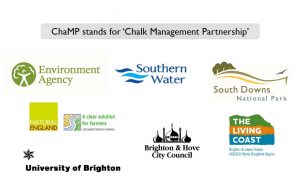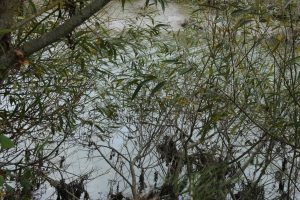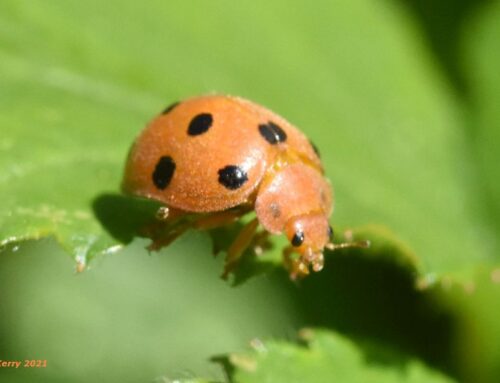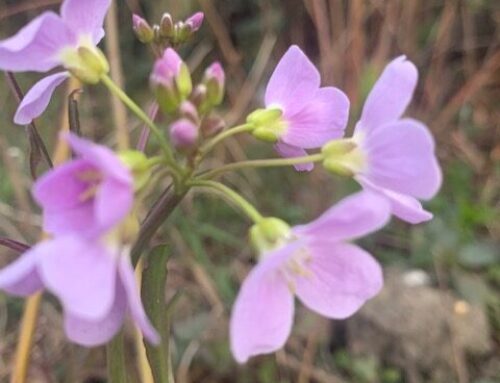Back in October one of our members Audrey, attended a presentation in Lewes by Aimee Felus of ChaMP (Chalk Management Partnership).
ChaMP
Brighton ChaMP for Water (ChaMP) was established to protect and improve the quality of groundwater in the Brighton Chalk Block, as a valuable natural resource for public water supply.
The project is a collaboration between the South Downs National Park Authority, the Environment Agency, Southern Water, the University of Brighton and Brighton & Hove City Council, working together with Natural England and the Brighton and Lewes Downs UNESCO Biosphere (the Living Coast) to protect the aquifer. They plan to create more partnerships with councils, landowners, community groups and businesses as the project progresses.
We take it for granted when we turn on the tap, that we will get clean drinkable water. Did you know that if you live near the National Park – particularly on the southern coast – it’s the chalk of the South Downs we have to thank?
Chalk is porous and holds water like a sponge. Between the Adur and Ouse valleys alone this aquifer enables Southern Water to pump enough groundwater to fill more than 15,000 Olympic swimming pools each year. It’s a vital resource for both homes and businesses in an otherwise relatively dry part of the country, and it sustains rare and nationally important habitats such as chalk streams and wetlands.
In the talk Aimee explained the work of ChaMP, and its relevance to Lewes in protecting our precious groundwater.
Nitrates in Groundwater
This groundwater is under threat – from population pressures and as a side effect of modern farming and lifestyles. Chalk aquifers have filtration properties but do not not remove nitrates very well, and only low levels of nitrates are permitted in safe drinking water. Excess nitrates end up in the water from farming, and also from unregulated amenity land, for example, equestrian facilities, golf courses, sports fields, gardens, allotments, historic landfill, leaking sewers, graveyards, and cemeteries. There are often seasonal peaks in nitrate leves, normally caused by fertiliser being flushed through the soil by rain.
Fertilisers have been found to be less efficient on chalk, so more leaches into the chalk and then the water. ChaMP are working with farmers to test a change of fertiliser habits, hoping to reduce nitrate loss to water, encourage cover crops in winter, improve the soil health, and introduce ecosystem service schemes.
Successful interventions have included restoring chalk grassland, planting woodland and planting cover crops. These take up the excess nitrates and avoid the seasonal peaks in nitrates in water. These also benefit the soil health and biodiversity – and the cover crops can be used for grazing animals.
Rain Gardens
Audrey said “Aimee was an excellent speaker, I can really recommend her. It was all interesting, but the most interesting bit was about the rain gardens and what a difference they can make.”
A “rain garden” is simply a low-lying area of ground containing plants tolerant of wetter conditions that is designed to receive and retain rainfall from surface water run-off from hard surfaces, and then slowly drains away over time to leave them without any open water for most of the year.
This natural way of helping to alleviate local flooding is a form of ‘green infrastructure’, that works in combination with the conventional grey infrastructure systems of drains, pipes and sewers.
SuDS
Rain Gardens are a type of Sustainable Drainage System, or ‘SuDS’, that can be created both in existing green spaces and as new elements of urban development, to help to reduce flood risk from heavy rainfall events – an phenomenon that is increasing with climate change.
The great thing about Rain Gardens is that they not only hold back storm water and reduce flooding, but they can also help to filter pollution, attract wildlife to your neighbourhood and look colourful at the same time – making them multi-functional in nature. ‘
ChaMP have been working with Transition Town Lewes for the past two years: identifying areas of flooding with residents. They have prioritised Nevill Green as the site for a rain garden because will be publicly seen and it is near to a source protection zone.
You can find out more about on the South Downs National Park website
Thanks so much to Audrey for the update. If you are attending an interesting talk or event, we would love to have a report to share with the network.
If you know of any local Rain Gardens, or are planning to plant one in your garden or neighbourhood, we would love to hear from you!










